
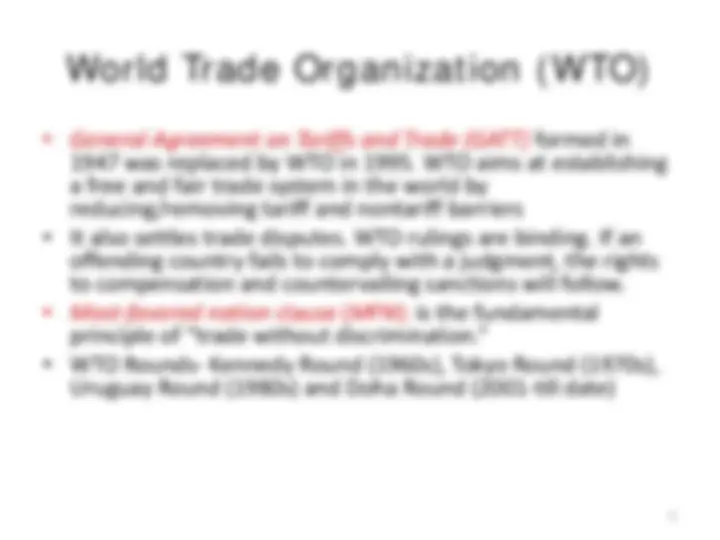
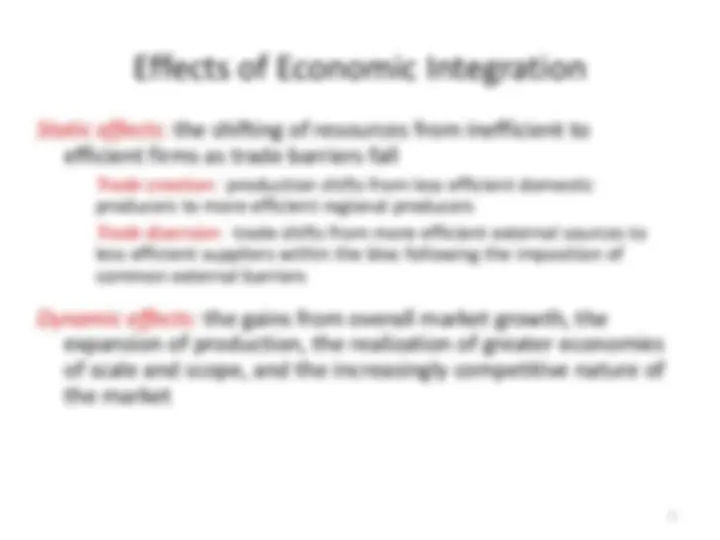
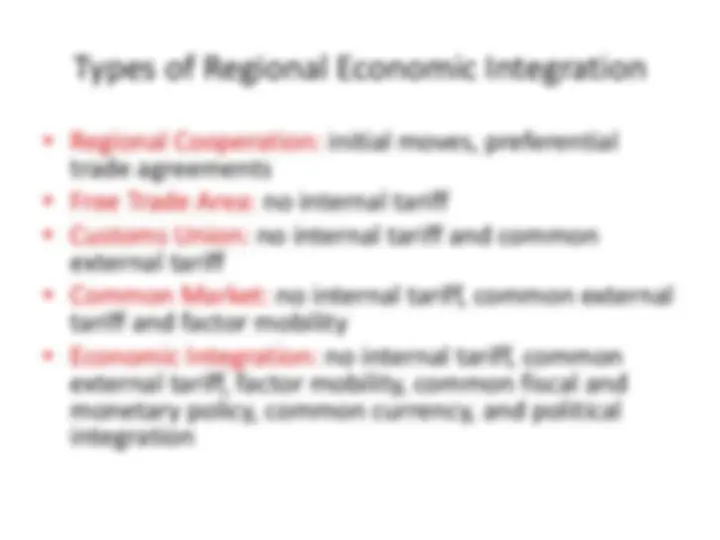
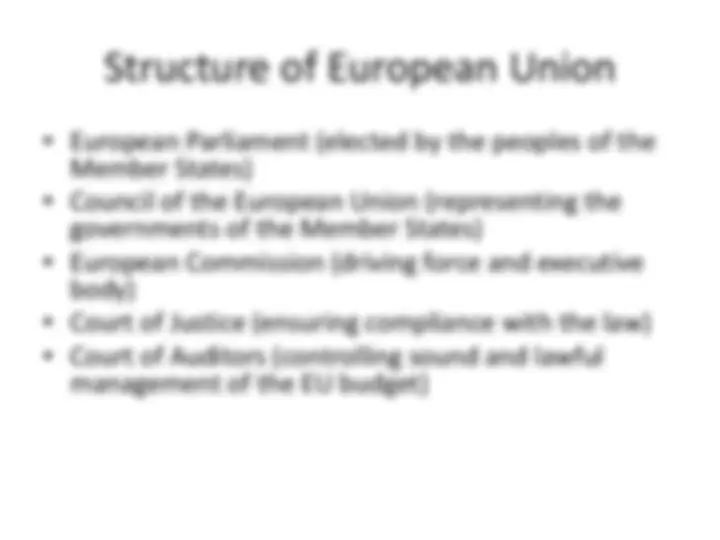
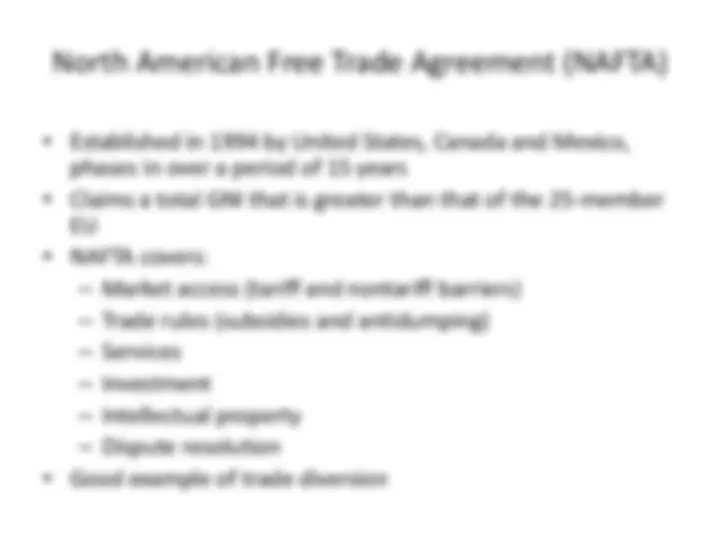
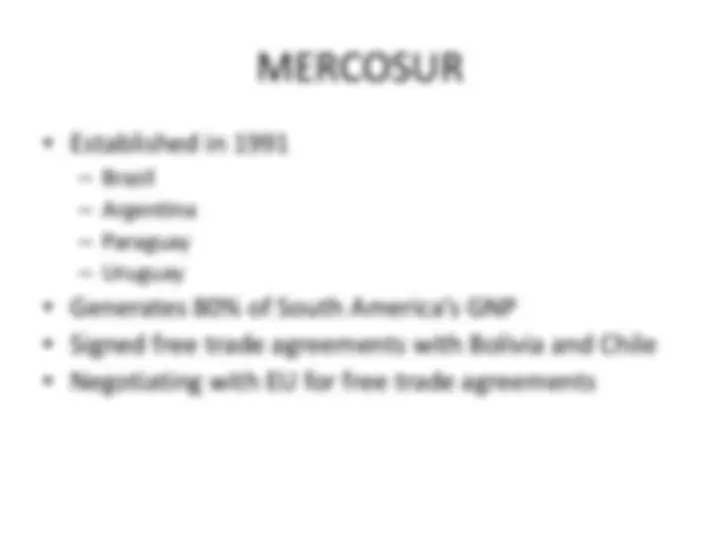
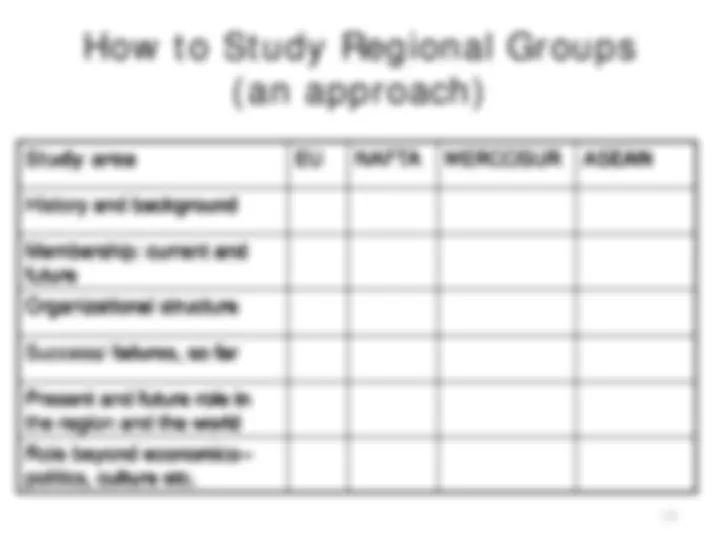
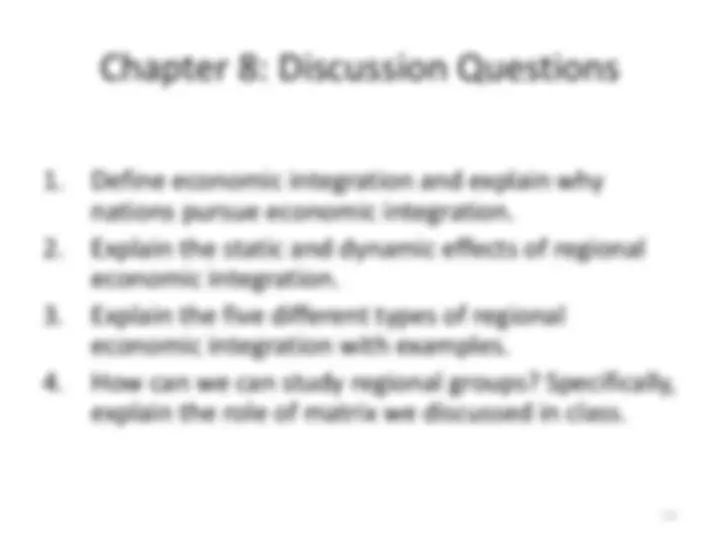


Study with the several resources on Docsity

Earn points by helping other students or get them with a premium plan


Prepare for your exams
Study with the several resources on Docsity

Earn points to download
Earn points by helping other students or get them with a premium plan
Community
Ask the community for help and clear up your study doubts
Discover the best universities in your country according to Docsity users
Free resources
Download our free guides on studying techniques, anxiety management strategies, and thesis advice from Docsity tutors
This lecture is from International Business. Key important points are: Cross National Cooperation, Economic Integration, World Trade Organization, Effects of Economic Integration, Types of Regional Economic Integration, Regional Integration Groups, Structure of European Union
Typology: Slides
1 / 14

This page cannot be seen from the preview
Don't miss anything!









Economic Integration
2
Effects of Economic Integration
Static effects: the shifting of resources from inefficient to
efficient firms as trade barriers fall Trade creation: production shifts from less efficient domestic producers to more efficient regional producers Trade diversion: trade shifts from more efficient external sources to less efficient suppliers within the bloc following the imposition of common external barriers
Dynamic effects: the gains from overall market growth, the
expansion of production, the realization of greater economies of scale and scope, and the increasingly competitive nature of the market
4
Types of Regional Economic Integration
Regional Integration Groups
Structure of European Union
MERCOSUR
Association of South East Asian
Nations (ASEAN)
How to Study Regional Groups
(an approach)
Study area EU NAFTA MERCOSUR ASEAN
History and background
Membership: current and future
Organizational structure
Success/ failures, so far
Present and future role in the region and the world
Role beyond economics-- politics, culture etc.
13
Chapter 8: Discussion Questions
14